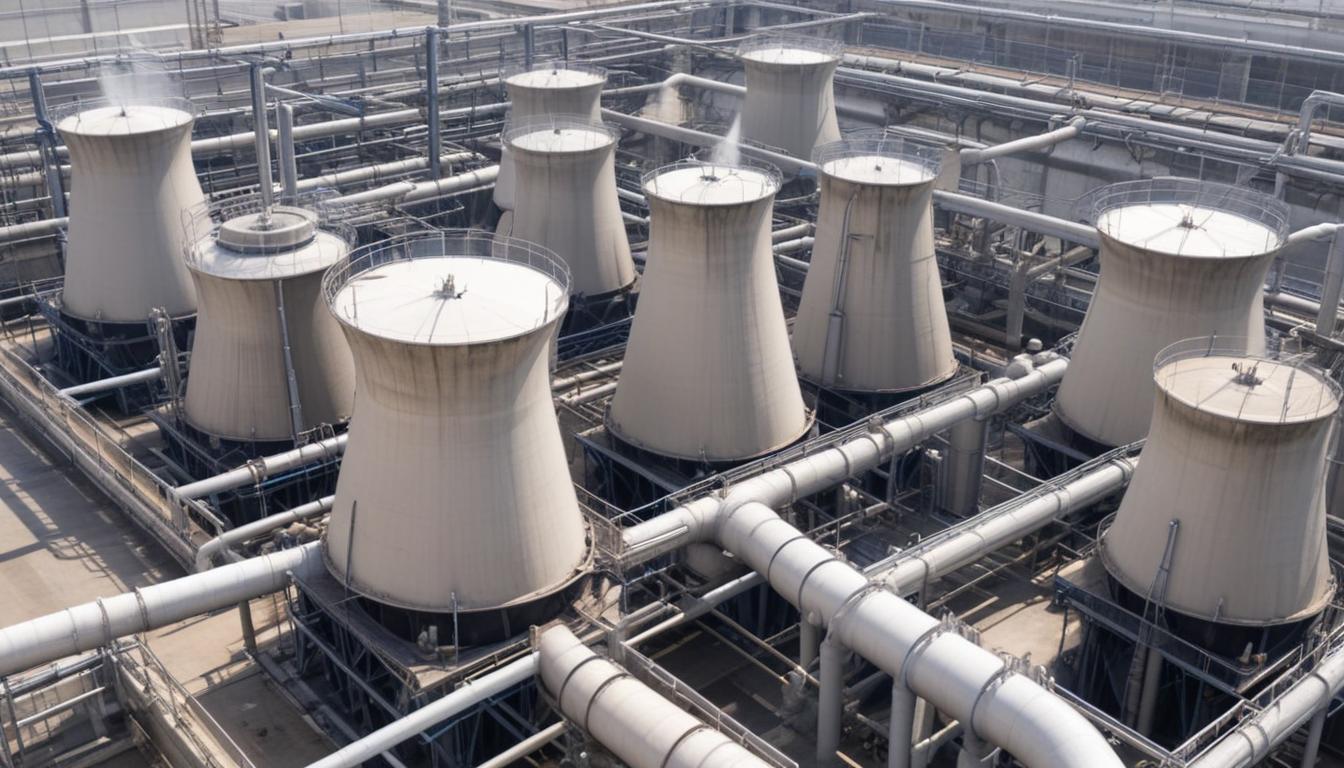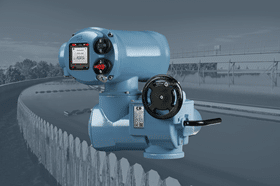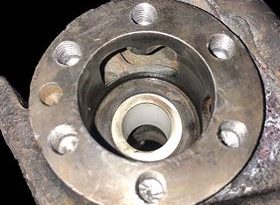the role of pumps in industrial cooling towers
Pumps are integral to the functionality of cooling systems, ensuring the continuous circulation of water throughout the industrial cooling tower. Their primary role is to maintain optimal water flow rates, which are essential for effective heat exchange and overall system efficiency. Without these industrial cooling tower pumps, achieving the necessary cooling performance would be unattainable.
Key Functions of Pumps in Cooling Systems:
- Circulation: Maintaining a consistent flow of water to facilitate heat removal from the system.
- Pressure Management: Ensuring the system operates under optimal pressure conditions to maximize efficiency.
- Energy Distribution: Distributing energy effectively throughout the cooling tower to support various operational processes.
- System Reliability: Providing dependable performance to minimize downtime and maintain continuous cooling operations.
Advantages of Utilizing Pumps in Industrial Cooling Towers:
| Advantage | Description |
|---|---|
| Enhanced Efficiency | Pumps ensure optimal water flow, improving the overall heat exchange process. |
| Cost-Effectiveness | Efficient pumps reduce energy consumption, leading to lower operational costs. |
| Scalability | Allows for easy scaling of the cooling system to meet increasing industrial demands. |
| Maintenance Flexibility | Pumps are designed for easy maintenance, ensuring minimal disruption to cooling operations. |
By fulfilling these critical functions, industrial cooling tower pumps play a pivotal role in sustaining the operational integrity and efficiency of cooling systems in various industrial applications.
types of pumps used in industrial cooling towers
There are several types of pumps employed in industrial cooling towers, each designed to meet specific operational requirements and system configurations. Understanding the various industrial cooling tower pumps available is crucial for selecting the most appropriate pump to ensure optimal performance and efficiency.
Common Types of Pumps Used in Industrial Cooling Towers:
- Centrifugal Pumps:
Centrifugal pumps are the most widely used type in cooling tower applications due to their simplicity, reliability, and ability to handle large volumes of water. They operate by converting mechanical energy from the pump’s impeller into kinetic energy, which propels the water through the system.
- Single-Stage Centrifugal Pumps:
These pumps have a single impeller and are suitable for applications requiring moderate head and flow rates.
- Multi-Stage Centrifugal Pumps:
Featuring multiple impellers, these pumps can achieve higher pressures and are ideal for systems with greater elevation differences or higher resistance.
- Single-Stage Centrifugal Pumps:
- Axial Flow Pumps:
Axial flow pumps move water parallel to the pump shaft, making them suitable for applications requiring high flow rates and low head. They are often used in large cooling towers where substantial water movement is essential.
- Positive Displacement Pumps:
These pumps deliver a fixed volume of water with each cycle, providing precise flow control. They are less common in cooling tower applications but may be used in specialized systems where consistent flow rates are critical.
- Gear Pumps:
Utilize interlocking gears to move water and are known for their durability and ability to handle viscous fluids.
- Piston Pumps:
Operate using reciprocating pistons and are capable of generating high pressures, suitable for specific cooling tower configurations.
- Gear Pumps:
- Vertical Pumps:
Designed with the motor and pump housing arranged vertically, these pumps save space and are easier to maintain. They are often used in installations where horizontal space is limited.
- Tilt-Up Pumps:
Featuring a horizontal motor and vertical pump, tilt-up pumps provide accessibility for maintenance without disturbing the piping system. This design enhances the pump’s serviceability and reduces downtime.
- Submersible Pumps:
Installed within the water basin of the cooling tower, submersible pumps minimize noise and reduce the risk of cavitation. They are ideal for applications where the pump needs to operate submerged in water.
Advantages of Different Pump Types:
| Pump Type | Advantages | Typical Applications |
|---|---|---|
| Centrifugal Pumps | High flow rates, reliability, ease of maintenance | General-purpose cooling towers, large industrial applications |
| Axial Flow Pumps | Efficient for high flow, compact design | Large cooling systems, applications requiring substantial water movement |
| Positive Displacement Pumps | Precise flow control, handles variable flow rates | Specialized cooling towers, systems requiring consistent flow |
| Vertical Pumps | Space-saving, easier access for maintenance | Facilities with limited horizontal space |
| Tilt-Up Pumps | Enhanced serviceability, reduced downtime | Cooling towers requiring frequent maintenance |
| Submersible Pumps | Quiet operation, minimizes cavitation risks | Water basin installations, submerged pump applications |
Factors Influencing Pump Type Selection:
When selecting the appropriate pump type for an industrial cooling tower, several factors must be considered to ensure the pump meets the system’s specific requirements:
- Flow Rate and Head Requirements: The desired flow rate and the total head the pump must overcome are primary determinants in pump selection.
- Space Constraints: The available installation space may dictate the pump’s orientation and type.
- Maintenance Accessibility: Pumps designed for easy maintenance can reduce downtime and operational costs.
- Energy Efficiency: Selecting pumps that operate efficiently at the required conditions can significantly impact energy consumption.
- System Reliability: The chosen pump should offer reliable performance to maintain continuous cooling operations.
By understanding the various types of industrial cooling tower pumps and their respective advantages, engineers and maintenance personnel can make informed decisions to optimize the functionality and efficiency of cooling systems.
pump selection criteria for optimal performance
Selecting the appropriate pump for an industrial cooling tower is critical to ensuring optimal performance and maintaining the overall functionality of the cooling system. The selection process involves evaluating multiple factors that influence both the efficiency and reliability of the cooling operations. Below are the key criteria to consider when choosing the right pump for your cooling tower:
Key Pump Selection Criteria:
- Flow Rate and Head Requirements:
Determining the required flow rate and the total head the pump must overcome is fundamental. The flow rate dictates how much water needs to be circulated, while the head represents the energy needed to move the water through the system, including elevation changes and resistance within the piping.
- Energy Efficiency:
Energy-efficient pumps reduce operational costs and minimize the environmental footprint. Selecting pumps with high efficiency ratings ensures lower energy consumption while maintaining the necessary performance levels.
- Reliability and Durability:
Pumps must withstand the demanding conditions of industrial environments. Selecting pumps made from robust materials and with proven reliability records can reduce downtime and extend the lifespan of the cooling system.
- Compatibility with System Requirements:
The selected pump should be compatible with the existing cooling tower infrastructure, including piping sizes, connection types, and control systems. Ensuring compatibility avoids the need for extensive modifications and facilitates seamless integration.
- Maintenance and Serviceability:
Pumps designed for easy maintenance can significantly reduce downtime and maintenance costs. Features such as accessible components, modular designs, and readily available spare parts enhance serviceability.
- Initial and Operating Costs:
While the initial investment is an important consideration, the total cost of ownership, including maintenance and energy expenses, should be evaluated. Balancing upfront costs with long-term operational savings is essential for sustainable performance.
- Space and Installation Constraints:
The physical space available for pump installation may limit the types and sizes of pumps that can be used. Vertical or compact pump designs can be advantageous in facilities with limited space.
- Control and Automation Capabilities:
Modern cooling systems often require advanced control features to optimize performance. Pumps with integrated control systems can provide better regulation of flow rates and pressures, enhancing overall system efficiency.
- Noise and Vibration Levels:
Minimizing noise and vibration is important, especially in facilities where these factors can affect the working environment or interfere with sensitive processes. Selecting pumps designed for quiet operation can improve the overall workplace conditions.
Comparison of Selection Criteria:
| Criteria | Description | Importance |
|---|---|---|
| Flow Rate and Head | Ensures the pump meets the system’s operational requirements. | High |
| Energy Efficiency | Impacts operational costs and environmental sustainability. | High |
| Reliability and Durability | Affects the longevity and dependability of the cooling system. | High |
| System Compatibility | Facilitates seamless integration with existing infrastructure. | Medium |
| Maintenance and Serviceability | Reduces downtime and maintenance costs. | Medium |
| Cost Considerations | Balances initial investment with long-term operational expenses. | Medium |
| Space Constraints | Determines the suitability of pump size and orientation. | Low |
| Control Capabilities | Enhances system optimization and performance monitoring. | Low |
| Noise and Vibration | Improves the working environment and operational stability. | Low |
Additional Considerations:
- Environmental Conditions:
Pumps must be selected based on the environmental conditions of the installation site, including temperature ranges, humidity levels, and exposure to corrosive substances.
- Future Expansion:
Anticipating future cooling demands can guide the selection of pumps that offer scalability and adaptability to increased loads.
- Regulatory Compliance:
Ensure that the selected pump meets all relevant industry standards and regulatory requirements to avoid compliance issues.
By meticulously evaluating these criteria, stakeholders can select industrial cooling tower pumps that not only meet the current operational demands but also provide flexibility and efficiency for future needs, thereby enhancing the overall functionality of the cooling system.
maintenance and troubleshooting of cooling tower pumps
 Regular maintenance and prompt troubleshooting are essential to ensure the reliability and efficiency of industrial cooling tower pumps. Proper upkeep not only extends the lifespan of the pumps but also minimizes unexpected downtime, which can disrupt cooling operations and affect overall system performance. Below are the key aspects of maintaining and troubleshooting cooling tower pumps:
Regular maintenance and prompt troubleshooting are essential to ensure the reliability and efficiency of industrial cooling tower pumps. Proper upkeep not only extends the lifespan of the pumps but also minimizes unexpected downtime, which can disrupt cooling operations and affect overall system performance. Below are the key aspects of maintaining and troubleshooting cooling tower pumps:
Routine Maintenance Practices:
- Scheduled Inspections:
Conduct regular inspections to identify wear and tear, leaks, and other potential issues. Scheduled checks help in early detection of problems before they escalate.
- Lubrication:
Ensure that all moving parts, such as bearings and seals, are adequately lubricated to reduce friction and prevent overheating.
- Cleaning:
Maintain clean pump components by removing debris, scale, and sediment that can impede performance and cause blockages.
- Alignment and Balancing:
Regularly check and adjust the alignment of the pump and motor to prevent excessive vibration and ensure smooth operation. Balancing the pump helps in minimizing mechanical stress.
- Seal Inspection:
Examine seals and gaskets for signs of wear or leakage. Replacing faulty seals promptly can prevent water loss and contamination.
- Electrical System Maintenance:
Inspect electrical connections, wiring, and control panels to ensure they are in good condition. Address any signs of electrical wear or damage immediately.
Common Issues and Troubleshooting Techniques:
- Reduced Flow Rate:
Possible causes include clogged filters, blockages in the piping, or worn impellers. Troubleshooting involves cleaning or replacing filters, clearing blockages, and inspecting the impeller for damage.
- Unusual Noises:
Sounds such as grinding, squealing, or banging can indicate mechanical issues like bearing failure, misalignment, or cavitation. Identifying the source of the noise and addressing the specific mechanical problem is crucial.
- Overheating:
Overheating can result from inadequate lubrication, excessive friction, or blocked cooling pathways. Check and replenish lubricants, ensure proper alignment, and clear any obstructions to resolve overheating issues.
- Electrical Failures:
Failures in the electrical system can prevent the pump from operating. Troubleshoot by checking fuses, circuit breakers, and wiring connections. Replace any damaged electrical components as necessary.
- Leakages:
Leaks can occur at seals, gaskets, or fittings. Inspect all connections and replace faulty seals or gaskets to stop leaks and prevent water loss.
- Vibration Issues:
Excessive vibration may be caused by misalignment, unbalanced rotors, or loose components. Realign the pump and motor, balance the rotors, and secure any loose parts to mitigate vibration problems.
Maintenance Scheduling and Documentation:
Implementing a structured maintenance schedule and maintaining detailed records are critical for effective pump management.
- Preventive Maintenance Schedule:
Establish a preventive maintenance schedule based on the manufacturer’s recommendations and the operational demands of the cooling system. Regularly perform maintenance tasks to prevent unexpected failures.
- Maintenance Logs:
Keep comprehensive logs of all maintenance activities, inspections, repairs, and replacements. Documentation aids in tracking the pump’s performance over time and identifying recurring issues.
- Performance Monitoring:
Use monitoring tools and sensors to continuously assess pump performance parameters such as flow rate, pressure, and energy consumption. Analyzing performance data helps in making informed maintenance decisions.
Best Practices for Effective Maintenance:
- Training Personnel:
Ensure that maintenance staff are properly trained in pump operation, maintenance procedures, and troubleshooting techniques. Skilled personnel can more effectively identify and resolve issues.
- Spare Parts Management:
Maintain an inventory of essential spare parts to facilitate quick repairs and minimize downtime. Having readily available components ensures that maintenance can be performed without delay.
- Regular Audits:
Conduct periodic audits of the maintenance program to evaluate its effectiveness and make necessary improvements. Audits help in ensuring adherence to maintenance schedules and identifying areas for enhancement.
- Utilizing Technology:
Leverage technology such as computerized maintenance management systems (CMMS) to streamline maintenance activities, schedule tasks, and manage documentation efficiently.
Emergency Response Procedures:
In the event of a pump failure or significant malfunction, having a well-defined emergency response plan is crucial to restore cooling operations swiftly.
- Immediate Shutdown Protocols:
Establish protocols for the safe and immediate shutdown of the pump to prevent further damage or hazards during an emergency.
- Emergency Repairs:
Identify key personnel and resources required for emergency repairs. Ensure that trained staff are available to carry out necessary fixes promptly.
- Backup Systems:
Implement backup pumps or redundant systems to maintain cooling operations while the primary pump is being repaired. Redundancy enhances system reliability and minimizes downtime.
- Post-Emergency Assessment:
After resolving the emergency, conduct a thorough assessment to determine the cause of the failure and implement corrective measures to prevent recurrence.
Conclusion:
Effective maintenance and timely troubleshooting of industrial cooling tower pumps are vital for ensuring the functionality and reliability of cooling systems. By adhering to structured maintenance practices, promptly addressing issues, and leveraging technology, organizations can optimize pump performance, extend equipment lifespan, and maintain continuous cooling operations essential for industrial processes.
energy efficiency and cost considerations
Energy efficiency plays a critical role in the overall performance and operational costs of industrial cooling tower pumps. Optimizing energy consumption not only reduces utility expenses but also contributes to environmental sustainability by minimizing the carbon footprint of cooling operations. Understanding the interplay between energy efficiency and cost considerations is essential for selecting and managing pumps that deliver both economic and ecological benefits.
Factors Affecting Energy Efficiency of Cooling Tower Pumps:
- Pump Selection: Choosing the right type and size of pump is fundamental to achieving energy-efficient operations. Oversized pumps can lead to unnecessary energy expenditure, while undersized pumps may struggle to meet system demands.
- System Design: The configuration of the cooling system, including piping layout and head requirements, directly impacts pump efficiency. Efficient system design minimizes energy losses and optimizes flow rates.
- Operational Practices: Adjusting pump operation to match varying cooling demands through strategies like load management can enhance energy efficiency.
- Maintenance: Regular maintenance ensures that pumps operate at peak efficiency by preventing issues such as wear, leaks, and blockages that can increase energy consumption.
- Control Technologies: Implementing advanced control systems, such as Variable Frequency Drives (VFDs), allows for precise regulation of pump speed and flow, significantly improving energy efficiency.
Strategies to Enhance Energy Efficiency:
- Implementing Variable Frequency Drives (VFDs): VFDs adjust the pump’s motor speed to match the actual demand, reducing energy usage during periods of low demand. This dynamic control leads to substantial energy savings compared to fixed-speed operations.
- Proper Pump Sizing: Selecting a pump that aligns with the system’s flow and head requirements avoids the inefficiencies associated with oversized or undersized pumps. Accurate sizing is achieved through detailed hydraulic calculations and system assessments.
- Regular Maintenance: Scheduled maintenance activities, such as cleaning, lubrication, and component inspections, ensure that pumps operate efficiently. Preventative maintenance helps identify and rectify issues that could impair energy performance.
- Upgrading to Energy-Efficient Models: Investing in modern, energy-efficient pump models can lead to long-term savings. These pumps are designed with advanced materials and technologies that reduce energy consumption while maintaining high performance.
- Optimizing System Design: Enhancing the overall design of the cooling system to reduce friction losses and streamline flow paths can improve pump efficiency. This may involve redesigning piping layouts or incorporating energy-efficient components.
Cost Considerations in Energy-Efficient Pump Selection:
| Cost Factor | Description | Impact on Overall Costs |
|---|---|---|
| Initial Investment | Higher upfront costs may be associated with energy-efficient technologies and advanced pump models. | Increased initial expenditure, offset by long-term savings. |
| Operational Savings | Reduced energy consumption lowers utility bills and operational costs. | Significant long-term financial benefits. |
| Maintenance Costs | Energy-efficient pumps often require less maintenance due to advanced designs and better materials. | Lower ongoing maintenance expenses. |
| Return on Investment (ROI) | The time required to recover the initial investment through energy savings. | Shorter ROI periods enhance financial attractiveness. |
| Lifecycle Costs | Total costs incurred over the pump’s operational life, including purchase, maintenance, and energy. | Comprehensive cost evaluation supports informed decision-making. |
Evaluating Energy Efficiency and Cost Benefits:
Lifecycle Cost Analysis: Conducting a lifecycle cost analysis (LCCA) helps in assessing the total cost of ownership of pumps by accounting for all expenses from acquisition to disposal. LCCA provides a holistic view of the financial implications and supports the selection of pumps that offer the best balance between cost and energy efficiency.
Payback Period: Determining the payback period, which is the time it takes for energy savings to recoup the initial investment, is crucial. Pumps with shorter payback periods are generally more favorable as they begin generating savings sooner.
Energy Audits: Regular energy audits can identify opportunities for improving pump efficiency and reducing costs. Audits assess current energy usage patterns and recommend enhancements to optimize performance.
Economic Incentives and Rebates:
Many regions offer financial incentives, rebates, or tax credits for upgrading to energy-efficient pump systems. These incentives can significantly reduce the upfront costs associated with implementing energy-saving technologies, making the investment more attractive and financially viable.
Balancing Efficiency and Cost:
While energy efficiency is paramount, it is essential to balance it with cost considerations to ensure that investments are economically justified. Selecting pumps that offer the best combination of efficiency, reliability, and cost-effectiveness requires a thorough analysis of both immediate and long-term financial impacts.
By prioritizing energy efficiency and carefully evaluating cost factors, organizations can achieve substantial savings and enhance the functionality of their cooling systems. Optimizing the energy performance of industrial cooling tower pumps not only contributes to reduced operational costs but also supports sustainable industrial practices.




